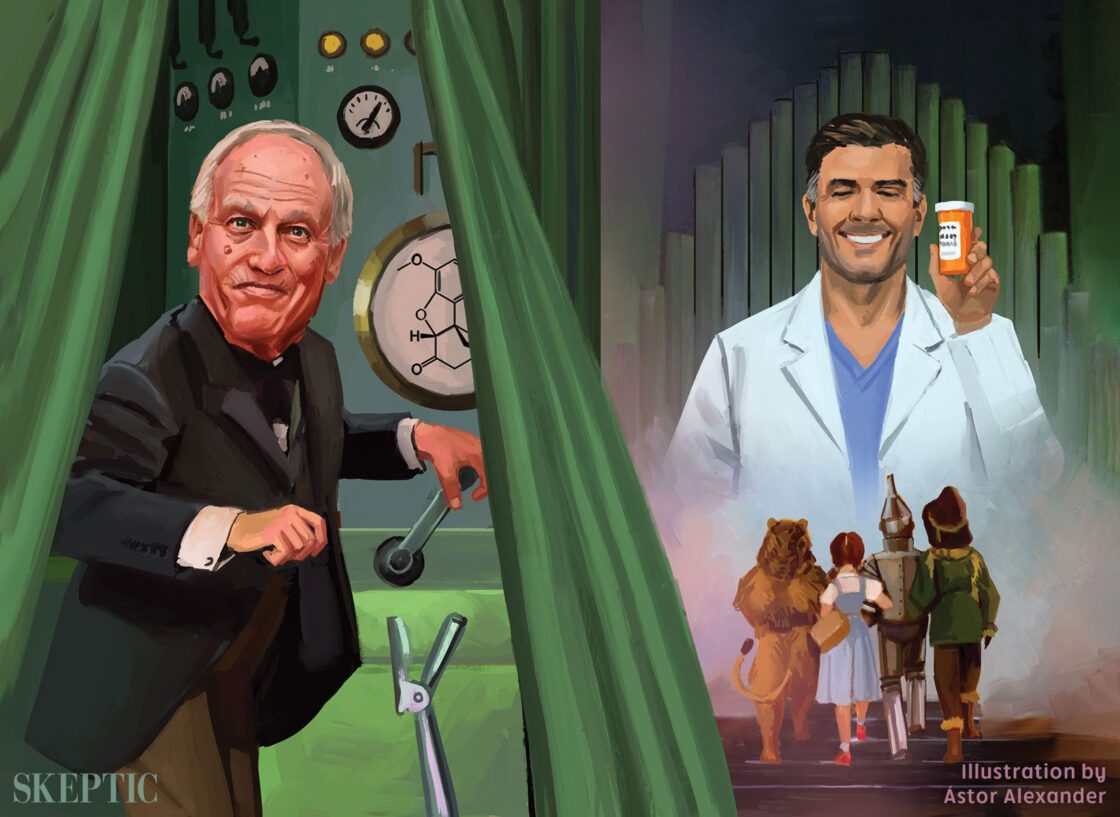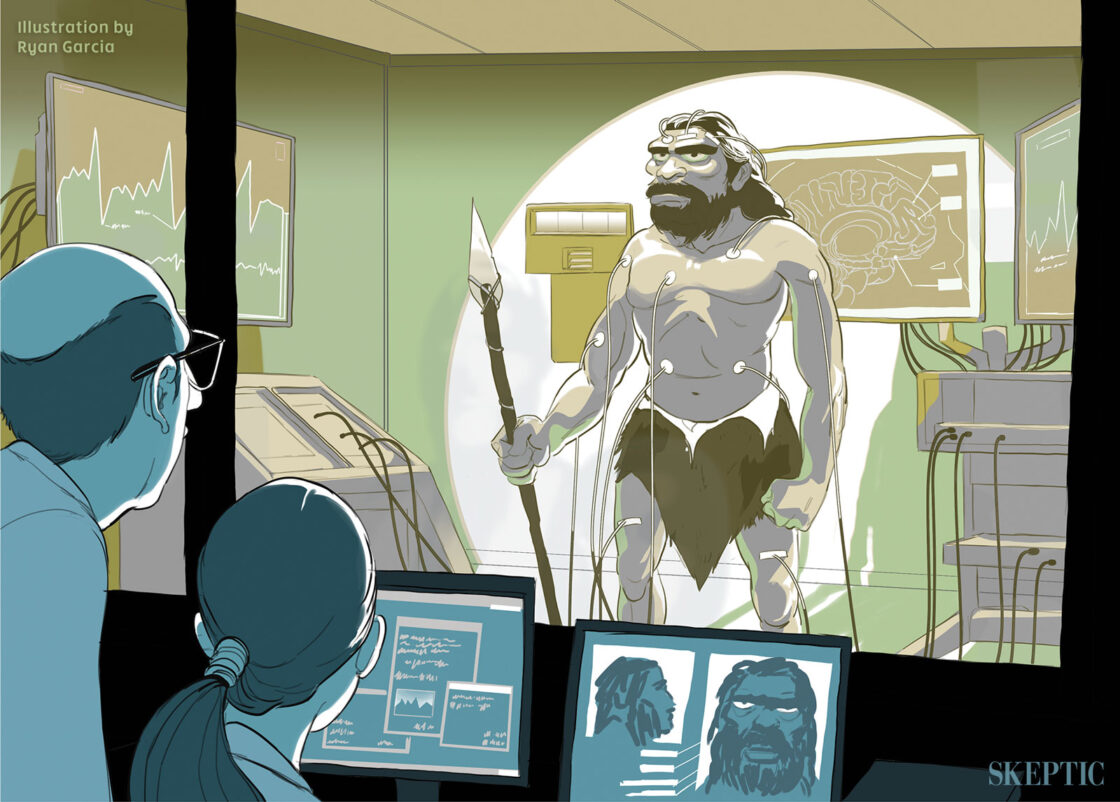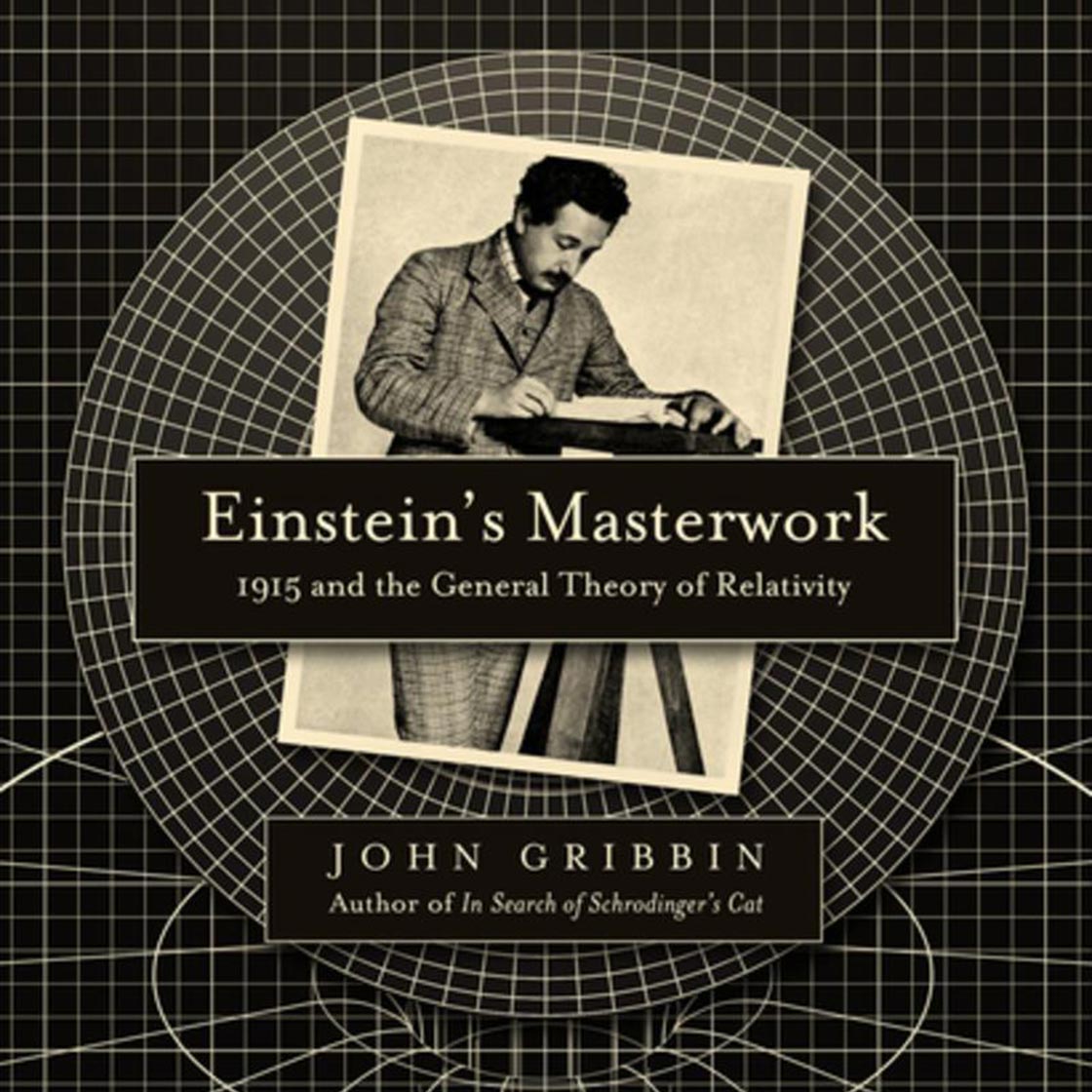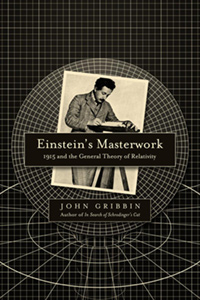John Gribbin’s book, Einstein’s Masterwork: 1915 and the General Theory of Relativity, shines new light not only on Relativity Theory but on Einstein’s intellectual processes. Einstein’s work fits well into a narrative of scientific history already established by Gribbin in his earlier works: Schrodinger’s Kittens and the Search for Reality and The Scientists: A History of Science Told Through the Lives of Its Greatest Inventors. Interestingly, in this later work Gribbin stakes out a position of historical determinism, one which argues that individuals usually do not matter that much:
What is much more important than human genius is the development of technology, and it is no surprise that the start of the scientific revolution “coincides” with the development of the telescope and microscope. I can think of only one partial exception to this situation, and even there I would qualify the exception more than most historians of science do. Isaac Newton was clearly something of a special case… (p. xix).
Keep this observation in mind as we consider that Isaac Newton is the only thinker to whom Einstein can be compared in terms of historical significance, and Gribbin wrote that statement in 2002. His insights in Einstein’s Masterwork should be understood in light of what he wrote then. He is a believer in studying the historical conditions of a person’s time for putting the impact of the work into context. For example: “What made Newton and Einstein so special was that they didn’t have just one brilliant idea (like, say, Charles Darwin and his theory of natural selection) but a whole variety of brilliant ideas, within a few months of one another” (p. 4). One should not read this as a physicist defending the preeminence of his subject against biology, but rather as an overall historical determinist making the case that if there ever were two people whose contributions can only be explained through individual genius then it would be Newton and Einstein and for the reasons stated.
As a young man in his very early twenties, Einstein enjoyed socializing over coffee in the Swiss city of Zurich. The notion of atoms as fundamental particles, Gribbin writes, had yet to be established. The desire to prove that atoms were composed of more than pure theory called Einstein out into the realm of philosophical science. “This was what appealed to Einstein; the idea that the power of the human mind and mathematics was alone enough to conjure up deep truths about the world” (p. 25.)
One wonders if perhaps Einstein’s social success in the café’s amounted to a phase. Newton, being the sort of man who stuck sewing needles under his eyeballs and liked (probably) fooling people into believing the fallen fruit feature at the center of his greatest insight, never married and never produced children. No one suffered from his detachments even if money cheats did later suffer from his work as a top bureaucrat at the royal mint. Einstein may have understood everything that Newton had scientifically, but Newton seemed to know something that Einstein did not: you do not get to take anyone with you when you go out there.
By this time, the problem that Einstein would need to solve had been established by science in 1901. Gribbin writes:
The German physicist Philipp Lenard had discovered that electrons could be knocked out of the surface of the metal by shining ultraviolet light onto it. Strangely, he had also discovered that the energy of the electrons ejected from the metal surface did not depend on how bright the light was. Whether it was faint or dim the electrons always came out with the same energy (essentially, the same speed). How could this be? Just four years later, Einstein would explain the phenomenon…(p. 33)
Einstein’s Masterwork then enters the Annus Mirabilis phase of Einstein’s life and Gribbin lays out the four great works of Einstein’s miracle year. Gribbin begins with the doctoral thesis, a pedestrian work (for Einstein) that “wouldn’t tax the imaginations of the professors at the university too much” (pp.47–48). Einstein produced no new research for his doctoral work, instead he developed a mathematical system for understanding how sugar molecules would change sizes by absorbing water in a solution, and then further used these equations to determine how to measure the solution’s viscosity. The dissertation was unimpressive only in comparison to Einstein’s other work; which is to say that it didn’t alter a paradigm and warp everyone’s mind, but “he developed techniques with widespread applications for industry wherever suspensions of particles in liquids are used” (p. 51). The work simplified a process.
Most importantly, Einstein’s dissertation prepared his mind to think in terms of particles and their behaviors. Atoms are fundamental to molecular theory, and thinking like this likely prepared him to think of light as being made of photons rather than waves. Gribbin writes:
In the paper that became his doctoral dissertation Einstein had already used the idea that molecules of sugar dissolved in water are being bombarded by water molecules from all sides, and that the way the sugar molecules move through the sea of water molecules affects the measurable properties of the solution: its viscosity and its osmotic pressure. The success of Einstein’s results provided powerful circumstantial evidence in favour of the kinetic theory, but even that was not direct proof that atoms and molecules exist” (p. 61).
This is the second paper of 1905 that focused on what is known as Brownian motion, which Einstein statistically predicted. Even the use of circumstantial evidence from that paper may have had its important effects; Einstein was about to engage in a process of inverse questioning. A phenomenon now existed that required explanation; this was Lenard’s puzzle regarding the fact that the intensification of a light beam did not increase the ejection of electrons from the object that received the light. Particles of size that are hit by molecules will usually take the hit relatively equally on all sides, but constant bombardment produces rapid statistical anomalies, which means that occasionally the force of the impact will favor one side over the other, causing a large particle to move in herky-jerky motion but nonetheless in a general direction. This is the famous “drunkard’s walk” concept of particle motion, but it can only be determined with statistical models.
By the time Einstein got to Lenard’s puzzle regarding the intensity of light and electron discharge, he had been thinking in terms of particles, statistics, and inverse questions for some time. Perhaps, equally as important, he had built up confidence in his methods. Here, Einstein would need to connect to the mind of his intellectual antecedent. Gribbin writes of the situation regarding illumination at that time:
Isaac Newton thought of light as a stream of tiny particles, and used this model in his attempts to explain his observations…. His 17th century Dutch contemporary, Christiaan Huygens, had argued for a different interpretation of the same phenomena, based on the idea that light is a form of wave; but Newton’s model held sway (largely because of the god-like status that his successors gave to Newton) until the work of the Englishman Thomas Young and the Frenchman Augustin Fresnel early in the 19th century (p. 69).
Young developed the famous double-slit experiment, which indicates that waves of light cancel each other out through a rippling and distinctly wave-like motion. These experiments, as it turned out, did not establish light as a wave. Instead, the experiment revealed a property of light that could be exposed in that instance and that could only be described by thinking of light as a wave. Einstein understood that in order to solve Lenard’s puzzle, he would need to think of light in a different way.
Max Planck established the starting point of a revolutionary syllogism with a 1900 paper that stated that light could be thought of as quanta. Blinded by waves, Planck did not take the syllogism to its natural conclusion. In 1905, Einstein theorized that light acts in packets of energy—particles—and used the photoelectric effect as proof. This is one of the most interesting parts of Gribbin’s book because he makes it clear that although Einstein would later win the Nobel Prize for the “Photoelectric paper” (as it is now known), that in fact “the section on the photoelectric effect was only a relatively small part of the paper: one of several examples that Einstein used to illustrate the importance of the concept of light quanta” (p. 82)
Light, thought Einstein, only looked like a wave statistically speaking. Particles could present as statistical waves at a certain level. This is the first inclination that the “observer” could be fooled relative to the stance of observation. This freed Einstein to theorize that intensifying a light beam did not increase the power of waves, but instead increased the number of photons. This would solve Lenard’s puzzle. More photons would knock off more electrons but not increase their speed. A greater intensity of waves, producing different colors, would increase the overall energy shooting into the electrons and therefore increase the speed. (The Nobel Prize came for Einstein in 1922 and evidentiary proof for his theory in 1923.)
But 1905 was still not over, and Einstein began to build upon the work of other theorists who were working on the concept of motion and how it related to an observer. Einstein, having already broken with the wave theory to produce a model that better explained the photoelectric phenomenon, now broke away from the concept of the ether because “he said that what matters is how two objects move relative to each other, and that there is no absolute standard of rest against which motion can be measured” (p. 100).
This is the central concept of the fourth paper, the one that features Special Relativity. Einstein started with new first principles, referencing no one, and began with the principal that some aspects of physical reality are purely related to the relation of two objects. The “ether” might be described as a stable reference by which motion could be measured, but Einstein understood that two objects traveling at the same speed, or a force like electricity/magnetism that moves through two conductors that are the same speed, provides its own reference and that movement is relative to the objects and not to the ether. This made two points for understanding motion rather than three. It is the difference between standing on a rock and watching a rabbit racing a turtle and standing on the turtle while watching a rabbit race a turtle. Gribbin writes:
Einstein proved that an observer in one inertial frame would perceive objects in a different inertial frame shrunk in the direction of their motion relative to him, and he would see clocks in the other inertial frame running more slowly than clocks in his own inertial frame. An observer in the other inertial frame would see the mirror image of this—he would see the first observer’s clocks running slow, and the first observer’s rulers and other equipment (and, indeed, the first observer) shrunk. All of this has now been confirmed by experiments (p. 108).
This work led to the understanding that mass and energy are the same thing, and thus E=MC2. This 1905 culmination was the Special Theory of Relativity, which might be better described as a specific theory because it applied only to the phenomena of energy and mass. Could it be applied more generally to explain a larger picture? It’s the equivalent of Darwin realizing that natural selection applied specifically (specially) to beetles and finches, but wondering whether or not it applied to all life everywhere. Gribbin states that the outpouring of work by Einstein in 1905 qualified him as a genius but “was ahead of its time.” Einstein stacked one brilliant insight on top of another in 1905, but he was really finishing syllogisms started by other physicists. 1915 would be different.
Mathematicians scribbled in the margins of Einstein’s theory, providing a greater validity for his ideas but also piquing the theorist. Few people quite knew what he was talking about and so honors and positions came slowly. He kept up his work at the patent office but started looking for new jobs. In the funniest section of the book Gribbin writes that Einstein:
…actually applied for a post teaching mathematics at a Zurich high school, enclosing with his application copies of all his published scientific papers. The bemused school governors did not shortlist him for an interview, even though in his covering letter he pointed out that he would be able to teach physics as well. How different might the development of physics have been if they had had more imagination? (pp. 119–120)
By 1909 Einstein had secured a professor’s post that paid him the same as what he made in the patent office, but “Rather than settling down in Zurich and working his way up the academic ladder there, Einstein’s move marked the beginning of his years as a peripatetic professor, hopping from university to university in search of…the opportunity to work on what he wanted” (p.123).
Einstein’s insights into motion and gravity began by understanding that “a theory of accelerated objects is also a theory of gravity. The explanation is disarmingly simple, although nobody before Einstein spotted it” (p. 135). Einstein used an analogy with elevators but Gribbin updates it to spaceships. Because gravity and acceleration is indiscernible, once the rockets on a ship go off, everything starts to float. Shine a light on the wall at that time and it will make a little bright spot. Then turn the rocket on again so that the ship shoots forward and “Everything falls to the floor…But what happens to the light beam?” (p. 136).
Light moves at a speed and so while the photons are en route, the ship moves forward a little and the beam will hit a different spot on the ship. Observers will see a bent beam of light. This meant that “gravity must bend light by just the right amount to make acceleration and gravity precisely equivalent” (p. 136). It was 1911, he published, and this portion of the theory was subject to evidence collection. An experiment was set up in 1914, but the First World War got in the way. This was good, writes Gribbin, because Einstein’s math predicted the wrong result at that point. It should enhance our conception of Einstein’s genius to know that he was smart enough to go and find help when he needed it. He got a numbers man, Marcel Grossmann, to help with the equations.
From “First Steps” Gribbin moves into “What Einstein Should Have Known” which features geometric concepts that had been worked out since the 18th and 19th centuries. Carl Freidrich Gauss created non-Euclidean geometry (dealing with other than flat surfaces) in the late 18th century but did not share it with anyone. Other geometers found the same concept on their own slightly later:
They all hit on essentially the same kind of ‘new’ geometry, which applies on what is known as a ‘hyperbolic’ surface, which is shaped like a saddle, or a mountain pass. On such a curved surface, the angles of a triangle always add up to less than 180 degrees, and it is possible to draw a straight line and mark a point not on that line, through which you can draw many more lines, none of which crosses the first line and all of which are, therefore, parallel to it (p. 140).
Gauss and a now-famous student named Bernhard Riemann developed “spherical geometry,” which mathematically explains lines on a curved surface. Gribbin explains this through the idea of longitude lines, which are parallel at the bulge of the globe but intersect at the north and south pole. In “The Masterwork” section Gribbin describes the importance of “tensors” in Riemann’s geometry. Tensors are to Riemann what vectors are to Euclid (the geometrically uninitiated might like to know at this point that vectors to Euclid are measurements of an object’s direction and speed). Gribbin writes:
The distances between points in Riemannian space are calculated in terms of a particular kind of tensor, known as the ‘metric tensor’. The metric tensor that applies to curved four-dimensional spacetime has been described as a ‘vector on steroids’ and has sixteen components of one another (p. 146).
Gribbin explains that the Special Theory is a theory for Euclidean space, while the General Theory applies spacetime with a curvature. The General Theory contains the Special Theory in the same way the Riemann’s descriptions contain Euclid. The mathematics wore Einstein out and he quit on it. “This turned out to be a mistake,” Gribbin notes, “the equation he rejected in 1912 was very nearly the solution he had been looking for” (p. 148). The theoretical world now owned Einstein almost completely and he worked in isolation from everyone but for the occasional visits from his wife Elsa. The concept of the “lone genius” is not a myth, but everyone can miss something important. Spinning from an inability to make sense of Mercury’s orbit with his theories, Einstein “looked again at the calculations from 1912 [and] saw almost immediately where he had gone wrong, and how with a relatively minor tweak he could come up with properly covariant field equations” (p. 150).
Einstein’s Alfred Russell Wallace was named David Hilbert, and when the two corresponded after Einstein saw the pathway to General Relativity, Hilbert wrote back that he had taken the same path to a different destination. Einstein almost did not finish. Physics had taken a physical toll; he fell sick and did not visit Hilbert but dragged himself back onto the path and:
Reworking the calculation of the orbit of Mercury with the revised version of this theory gave the right answer! The theory now predicted a perihelion of 43 seconds of arc per century, exactly matching observations. Einstein was so excited that he suffered heart palpitations and had to take a rest. But this wasn’t all. The same revision to the theory gave a new prediction for the bending of light by the Sun, not 0.85 seconds of arc as he had previously calculated, but exactly twice as much, 1.7 seconds of arc (pp.151–152).
This latter result would be proven by Arthur Eddington in 1919. Einstein’s theory worked in the inverse by explaining an already-known phenomenon, and it worked directly, by creating a prediction that could be proven through experiential evidence. As for Hilbert, Gribbin writes “Was it all Einstein’s work? The evidence suggests that it was, although Hilbert was within a hair’s breadth of getting there first” (p. 153).
There’s more to Gribbin’s book in the “Legacy” chapter, which explains what the General Theory has been used for since 1915. However, at this point the book review must end. Gribbin’s books about Einstein and the General Theory presents such a new and important conception of Relativity Theory that it brings up new questions and possibilities. Late in the book Gribbin lightly jabs at “amateur theorists who delight in trying to find a better theory than Einstein’s”(p. 191). And so caution will be exercised and a caveat stated: the following paragraphs do not represent a possibility for a new theory, but rather a few questions raised from Gribbin’s interpretation.
Gribbin has written a definitive work on Einstein, his intellectual process, and the creation of a true Masterwork. Even though no one still fully understands the wave-particle duality of light, because of Einstein physicists do understand light’s interconnections with space, time, gravity/acceleration, and speed through the general theory of relativity. Because of John Gribbin, Einstein’s process and works are now accessible to a much larger number of readers. In fact, Gribbin writes so well that his book takes on its own paradox. By attempting to shine a light on the genius of Einstein, Gribbin further illuminates his own. ![]()
About the Author
Dr. Chris Edwards teaches World History and AP World History at a public high school in Indiana. He is a frequent contributor to Skeptic magazine on a variety of topics and the author of several books. He currently directs the Scientech/Ball State University Summer Institute for Math and Science teachers.
This article was published on June 30, 2018.



















As soon as I read the second paragraph I knew I had to write something, but I also suspected that someone else would have already replied with the same comment and Ted Fontenot did exactly that. Darwin didn’t have just one brilliant idea, but several, so he is very similar to Newton and Einstein in that regard. The difference was that Darwin’s ideas were not proposed in quantitatively-based mathematical form, as were Newton and Einstein’s hypotheses, but were qualitative in their initial conception, much as the initial hypotheses of continental drift and plate tectonics (today these biological and geological scientific theories are all quantitatively- and physically-based, of course).
Darwin proposed (1) the hypothesis of natural selection (including the random variation of traits within species populations) as the primary driver of evolution; (2) the hypothesis of divergence as the mechanism of speciation; (3) the hypothesis of sexual selection to explain many differences between sexes; and his most important idea as far as humans are concerned, (4) his explicit hypothesis of descent with modification and retention of genetically-based behavioral traits (instincts and emotions) among social animals, studied today for animals as sociobiology and for humans as evolutionary psychology.
Just as with Newton and Einstein’s hypotheses, Darwin’s ideas now have enormous empirical supporting evidence and explanatory and predictive power and are termed scientific theories; they are at least as important in biology as Newton and Einstein’s are within physics. Darwin also proposed (5) an explanation for the transmission of hereditary information through generations and ancestral-descendant relationships (today we would use the terms lineages and clades), but his genetic hypothesis was wrong and never accepted (Mendel’s hypothesis was correct), but at least Darwin recognized that such a hypothesis was necessary.
There’s an error in Gribbins’ text:
“The theory now predicted a perihelion of 43 seconds of arc per century, exactly matching observations”.
As it stands it makes no sense. It presumably refers to “… a precession of the perihelion by 43 seconds of arc …”.
Darwin didn’t have just one idea. Or if he did, it had a number of ramifications. Sexual selection and the adumbrations of evolutionary psychology and sociobiology are big ones of those ramifications. This isn’t even getting into the small but exquisite work he did on barnacles, reefs, and the sifting of the earth by organisms. EO Wilson says somewhere that every time he thinks he’s being completely original, he found that Darwin did it already or that it is implicit in something he did.
Just a comment about the wave-particle duality. This is what I refer to as ‘pulse wave’ representation of a photon Each photon is a single pulse of momentum — a pulse disturbance in the field. Why is this true? Because the pulse is a momentum pulse, which necessarily builds up to its maximum at the peak of the pulse, where it then begins to decline again. This momentum decrease after peaking, is ‘conserved’ as increasing momentum at the pulses advancing edge. Here is the point: since the decline beginning at the peak of the momentum pulse is a reversal in the change in momentum, it must go through zero; this means that the leading edge of the pulse also starts from zero momentum, thus separating the momentum into a discrete pulse or ‘particle’ (i.e., photon) within the field. You can plot this momentum curve along with the typical sinusoidal change in the magnetic and electric fields to which it corresponds — corresponding to one cycle in these latter curves.
Great article, though it contains a common mistatement that tends to lead readers astray:
“This work led to the understanding that mass and energy are the same thing, and thus E=MC^2.”
Though mass and energy are mathematically equivalent, they are not the “same thing.”
The issue is that many people think of energy as a hazy, non-physical force. Use of such loose wording unwittingly fuels wishful beliefs that a non-physical (supernatural) realm must exist.
I am privileged to enjoy socializing over coffee with Chris Edwards, and so understand Einstein’s appreciation of interesting conversation while drinking coffee. And, I enjoyed another illuminating article in Skeptic by Dr. Edwards.
In considering Einstein’s rejected application to teach high school, the author under review speculates, ‘How different might the development of physics have been if they [i.e. the school administrators] had had more imagination?’ A more interesting question is, how different would the development of educational theory and practice, especially but not exclusively STEM, have been if Einstein had provided a model? So-called gifted students, or students with a particular keen interest in a subject (not necessarily the same thing), often long for an Einstein to engage their interest. However, it’s my experience that, OTOH, Einsteins don’t tend to be great teachers, as they may focus on that one student who’s far ahead of the class and/or far more eager to delve into the subject, and they’ll withdraw to their own little bubble of enthusiasm while the rest of the class is left behind.
Anyway, although the review focuses on the specifics of Einstein’s science, a more interesting and salient point is brought up at the beginning (and then sort of lost along the way). The ‘colourful character’ personae of Newton and Einstein, I wager, have done more to spark at least a cursory interest in science among nonscientists (which comprises most of us) than any of their specific discoveries. Newton and his apple, and the Cradle toy on many a desktop, and Einstein’s iconic face and his famous equation – the one thing everyone knows although almost no average man-in-the-street can explain correctly – may not have taught much hard science, but they at least get a toe in the door to make science accessible and a bit less scary to the typical layperson. Much as you can’t sum up Shakespeare with that bald pated face familiar to all, and the image of Hamlet in black interrogating a skull about to-be-or-not-to-be and Juliet hanging out on her balcony while Romeo moons over her from the shadows below. Doesn’t really constitute an education in English literature, much less the kind of depth that true scholars would adduce.